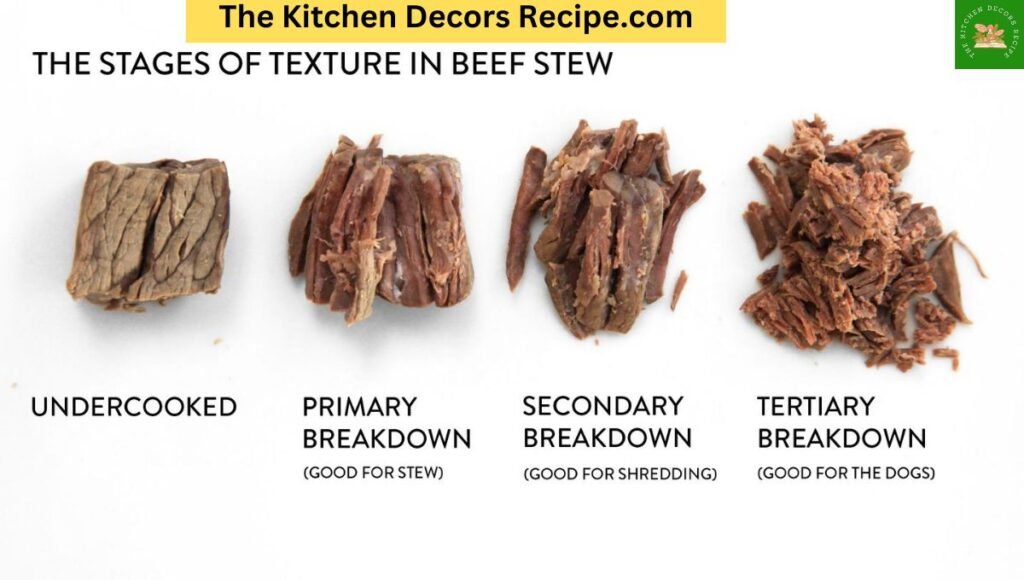Have you ever experienced this? You are making a slow cooker beef stew. You put in all the ingredients, leave for work, and return home excited about the meal. But, it is overcooked, because you left your Crock-Pot set to high.
You can use these tips to ensure that the next time you make a slow cooker beef dish — or any other meat dish — it doesn’t turn out badly.
Understanding Slow Cooking
USDA Food Safety and Inspection Service states that slow cookers cook food at low temperatures. They can range from 170 to 280 degrees Fahrenheit depending on whether the Crock-Pot is set on high or low. Slow cookers can tenderize meat by using a combination of direct heat and trapped steam.
Although it seems unlikely, meat can still be overcooked in a slow cooker. University of Wisconsin Extension states that liquids in a slow cooker can’t boil away like they do when cooking on a stove or in an oven. Therefore, while meat won’t burn, overcooking is possible.
According to University of Wyoming Extension slow cooking is a delicate balance, as moist heat makes the collagen in meat more tender but also causes muscle fibers to shrink, making the meat tougher. The higher the temperature, then the tougher the beef.
It is crucial to find the perfect temperature, duration, and liquid amount to ensure that the meat is cooked to kill all germs. However, you do not want it to become tough or mushy.
Avoiding overcooked slow cooker recipes
The majority of slow cooker recipes include details such as how much water you need to add, the temperature and time to cook. It is best to follow the recipe as written the first couple of times before making any changes.
University of Wyoming Extension suggests that if you make any adjustments, keep in mind that 2 hours on low is equivalent to 1 hour on high. If your recipe calls for cooking on low, but you’d like to cook the meat on high, then remember to reduce the cooking time.
The University of Wyoming Extension says that the slow cooker should be filled no less than half, and not more than two thirds. The meat can overcook if you don’t fill the slow cooker enough. If it is overfilled, liquid will spill out and the mess is made.
Anyone who has tried to eat in a dozen Nashville Hot fried chicken restaurants over the course of a single day will tell you that you can never eat too much good food.
I used to think that if you cook a stew long enough, it’s a good idea. But cooking it longer was even better. When I visited my parents, I recall that she requested a beef soup one winter. The first day I made a rich veal broth, which was high in gelatin and texture. It was the perfect base to make a luxurious beef stew. The second day I made my broth and seared the short ribs. I then put it in the oven for an entire afternoon to cook. The house smelt amazing and I knew the beef would be incredibly tender and juicy.
The result was a beef that turned into a pulpy, dry mass as soon as you moved your jaw. It was still tasty, but my mom’s stew dreams and my ego were destroyed.
You can definitely overcook stew beef. How do you know if it’s ready? What changes should you be looking for in the meat? To find out, I conducted an experiment.
I used a scale to cut the top round into 40 identical cubes. I checked each one visually to make sure there were no strange connective tissue streaks or other outliers. Then I added the entire beef to a pot that I kept at 190degF. After the first two hours, I removed 4 pieces of beef and blotted them on paper towels. Then, I weighed them. Finally, they were wrapped in plastic. After the first two hours, I removed four more cubes every half-hour and repeated this process. I averaged each set of 4 cubes in order to get a number which was representative of the moisture loss over time. I also tried one cube from each batch.
Here’s where it gets interesting. The beef that has been simmered in water for five hours will taste distinctly dryer than the beef that has been simmered in water for three hours. When I weighed the beef cubes after cooking, they all came out between 11 and 12 g (for a loss in moisture of 40 to 45%), regardless of how long they had been cooked. A longer cooking time doesn’t necessarily mean more moisture loss.
What accounts for the differences in the taste of fruit?
Moisture Level vs. Juiciness
There are several reasons. Our perception of juiciness does not always match the actual, measurable amount of juiciness of a piece meat. How juicy something is to us can be affected by other factors such as the amount of fat in it and our saliva production (and, therefore, how hungry we feel). There are also other physical phenomena at play in this case: the juices of the three-hour-beef are thicker and more tightly held in place than those of the five-hour-beef.
*This is an interesting fact. If we expect something to be juicy it will taste even juicier. Neat!
Gelatin is created when connective tissue breaks down in beef. This gelatin helps to thicken juices and keep them in the meat. It also coats your tongue and mouth. As the meat’s muscle structure breaks down, it loses moisture. Imagine the difference between a large net of water balloons compared to a small net of sponges. The sponges may contain the same amount, but when you press on them, the liquid gushes out at once leaving a dry shell. Water balloons require more effort to pop, and release their juices slowly. This is similar to how juicy meat releases juice as you chew it, rather than gush all at once.
Visualizing Texture
In order to demonstrate the texture difference I felt in my mouth, I decided to use a visual representation. To achieve this, I placed each beef cube on a small plate and then placed a tomato can on top. The weight of the tomatoes caused the cube to deform and crumble. Then I removed the plate to compare the crushed beef.
The two-hour beef is in the upper-left corner, and the beef that has been cooked for six-and a-half hours in the lower-right:
It is pretty obvious how the beef changes over time. This is not surprising. What is shocking is that the breakdown appears to occur in three distinct phases. The beef is pretty much the same from two hours to three-and-a-half hours (the four first pieces). There’s then a big leap between three and half and four. The next three pieces are quite similar. There is then a big jump between five and five-and-a-half hours. These discrete jumps are referred to as the primary secondary and tertiary break down of beef. **

Primary breakdown is when large swaths that run along a stew beef piece break down into gelatin. The individual cubes retain their shape well but are tender when you bite them. The beef is not chewy, nor does it shred easily.
Secondary breakdown occurs when the tissue that holds together the individual muscle fibers (the long, thin bundles of muscle cell cells which give meat its distinctive grain) is broken down. The fibrils are then easily separated from one another. Even vigorous stirring can easily shred the beef at this stage. You want to look for this stage in dishes containing shredded meat. For example, a Cuban old ropa or beef Barbacoa that will be used for tacos, or meat for a pasta ragu.
Tertiary Breakdown occurs when the individual muscle fibers themselves breakdown, transforming from distinct, juicily-filled strands to pulpy mush. Your meat is now beyond overcooked. You won’t get any treats for dinner.
All of these phases will be timed on the assumption that your meat is being cooked at 190degF in a Dutch Oven. Slowly simmering the meat or cooking it at a lower heat will speed up or slow down its progress through each stage. Different cuts of beef will change at different rates depending on their ratio of lean meat to connective tissues, and how distinct or tough the individual fibers of the muscle are. Knowing and identifying the phases will help you to plan stews more effectively***.
*** This may help you to realize that cooking for 8 hours on the stove is not always a good thing.
Final Thoughts
What is my advice? As a general guide, use the cooking time in any stew recipe. Check your meat at around 80% of total cooking time and stop cooking when the meat reaches the point where it is tender but not falling apart.
